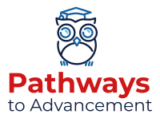The field of distance education was growing at a steady clip well before coronavirus forced the world into lockdown. An April 2020 report in The World Economic Forum indicated that the market for online education would reach $350 billion by 2025. But even this figure is sure to see a revision. This is due to the fact that COVID-19 gave distance education an unprecedented and unexpected boost by forcing scores of teachers and students across the world to work from home. If you plan to do further studies on an eLearning platform, it would help to know if you’re suited for it. If you’re not, changing at a point where you’re well into a course might be difficult once campus seats are filled and admissions close.
Here are some questions to consider before you take the leap:
1. Are you comfortable being on your own?
There are students who prefer the brick-and-mortar classroom environment. The presence of other students has a positive effect on individual learning efforts. The peer group inspires and motivates. It makes studying less of a lonely slog.
If you’re a “people person” who likes the buzz of a classroom and finds it boring to spend long hours studying alone at home, distance education might not be right for you. Conversely, if you’re comfortable flying solo for a few hours each day, eLearning should suit you fine.
Also, you don’t have to surrender to a hermetic existence if you undertake a distance learning course. You can join subject-related groups and engage in online discussions, so put fears of complete isolation to rest.
2. Can you balance work and eLearning?
If you’re a working professional seeking additional qualifications to boost your growth prospects, distance learning is the way to go. However, you must consider whether you can fit distance learning into your daily work schedule. If you need to operate outside the home (as an on-site construction supervisor, or general medical practitioner, for instance), confirm that you can undertake e-learning classes at times suitable for you.
3. Are you familiar with the eLearning platforms?
If you’re accustomed to doing online research, sending emails, accessing cloud storage facilities, and interacting through apps, you shouldn’t face much of a learning curve with distance education. Pay attention to the Learning Management System (LMS) that the eLearning service provider is using to see if you’re comfortable with it. TalentLMS, Google Classroom, 360 Learning Engagement Platform, Looop, Canvas, Moodle, and Chamilo are worth checking out before signing up for remote studies.
The digital space is expanding exponentially, with new technologies and services springing up by the minute. If you’re going to use the digital platform, be sure you’re ready to keep pace with it.

4. How good are you at managing your time?
If you’ve signed up for an eLearning program that has fixed “classroom” hours or a guided-learning approach, you’ll have to reorganize your daily schedule. Among other things, this would mean setting priorities and keeping time-consuming chores like doing the laundry for the weekend. It might also mean fixing appointments so they don’t clash with study time.
Bear in mind that classroom assignments might take longer than you think. Play safe by setting aside enough time for each assignment and beginning tasks well in advance of submission dates. This way, you’ll be on safe ground if your computer crashes at the eleventh hour, or if your Internet connection slows down.
Efficient time management is key to success in the high-pressure environment of academia.
5. Are you independent and self-motivated?
In a conventional classroom, the spirited competitiveness of students will motivate you to push yourself. But when you’re on your own at home, you’ll have to count on your innate drive and ambition to succeed. Owing to the nature of the distance learning setup, you probably won’t receive prompt feedback, research references, or answers to questions. However, when you do get feedback, you should be able to process and use it effectively.
“It is essential that online students be willing to reflect on this feedback and proactively make changes to their own habits and strategies as needed,” says Lacey Geiger, open course coordinator at Missouri State University.
If you’re the type of student who needs constant hand-holding, reminders, and prodding to get work done, distance learning wouldn’t be right for you.
6. Are you used to reading and writing?
No, you don’t have to be a bookworm or wordsmith. But you’ll have to pore over course materials, textbooks, and research material and do quite a bit of writing as you undertake written tests and interact through email with teachers and fellow students.
It’s crucial to have sound communication skills in order to get the most out of a distance education program. In addition, you must also be proactive and clear when seeking clarifications or guidance from faculty on study-related issues.
“Students must be willing to approach their instructors with questions,” says Geiger. “Successful students will try to include as much detail in their question as possible, so that the instructor can provide a similarly detailed answer.”

7. Is there a suitable eLearning study space at home?
For distance learning, all you’ll need is a desk, a comfortable chair, a computer, and a broadband Internet connection. Choose a quiet corner in the house and ensure there’s enough light and ventilation.
Be clear about why you’re taking up a eLearning course. Consider other options (like campus education) seriously, and then decide. If you choose distance learning, set modest goals for yourself. This is essential if you have other commitments to meet, such as fulfilling job demands, rearing children, or caring for an elderly relation.
Key Takeaway
Once you’ve got the hang of balancing work and study and are able to achieve good academic scores, you may broaden your ambitions. Make use of the breaks between semesters to identify your strengths and weaknesses before taking up further courses. eLearning allows you to study at your own pace and time. Don’t unduly pressure yourself. Give it your best shot.



